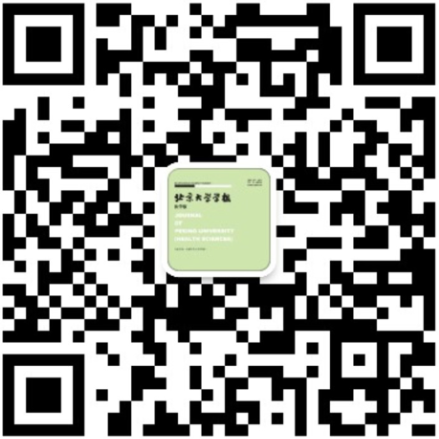北京大学学报(医学版) ›› 2021, Vol. 53 ›› Issue (6): 1083-1087. doi: 10.19723/j.issn.1671-167X.2021.06.013
系统性红斑狼疮患者血清白细胞介素-2受体α水平及其临床意义
- 北京大学人民医院风湿免疫科,北京 100044
Serum interleukin-2 receptor α as a clinical biomarker in patients with systemic lupus erythematosus
TIAN Jia-yi,ZHANG Xia( ),CHENG Gong,LIU Qing-hong,WANG Shi-yang,HE Jing(
),CHENG Gong,LIU Qing-hong,WANG Shi-yang,HE Jing( )
)
- Department of Rheumatology and Immunology, Peking University People’s Hospital, Beijing 100044, China
摘要:
目的:探究系统性红斑狼疮(systemic lupus erythematosus,SLE)患者血清中白细胞介素-2受体α(interleukin-2 receptor α,IL-2Rα)水平在临床中的意义。方法:收集2019年1月至2020年12月就诊于北京大学人民医院的107例SLE患者病历资料,依据SLE疾病活动度指数(SLE disease activity index 2000,SLEDAI-2K)评估患者的病情活动情况,并选取年龄、性别分别匹配的39例健康人作为健康对照。采用酶联免疫吸附法测定SLE患者组和健康对照组的血清IL-2Rα水平,比较其差异并分析SLE患者IL-2Rα水平与临床指标及实验室指标的相关性。采用t检验或Mann-Whitney U检验、 χ2检验和Spearman秩相关性分析进行统计学分析。结果:SLE患者血清IL-2Rα水平[830.82(104.2~8 940.48) ng/L]较健康对照组[505.1(78.65~1 711.52) ng/L]明显升高(P<0.001)。相关性分析显示,血清IL-2Rα水平与SLEDAI-2K评分及抗核小体抗体滴度呈正相关(r=0.357,P<0.001;r=0.25,P=0.027)。107例SLE患者中36例(33.6%)合并狼疮性肾炎,合并狼疮性肾炎的患者血清IL-2Rα水平[1 102.14(126.52~8 940.48) ng/L]较未合并狼疮性肾炎患者[743.89(104.19~4 872.06) ng/L]明显升高(P=0.032)。高IL-2Rα水平组合并狼疮性肾炎者(40.8%)较低水平组(19.4%)明显升高(P=0.031),高IL-2Rα水平组SLEDAI-2K评分更高[10 (3~21) vs. 7 (3~16),P=0.001]。SLE患者常规治疗12周后血清IL-2Rα水平[1 119.1(372.25~2 608.86) ng/L]随病情改善较基线时[1 556.73 (373.08~8 940.48) ng/L]明显下降(P=0.042)。结论:血清IL-2Rα可作为SLE病情活动评估指标,与肾脏受累有一定相关性。
中图分类号:
- R593.24
| [1] |
Tsokos GC. Autoimmunity and organ damage in systemic lupus erythematosus[J]. Nat Immunol, 2020, 21(6):605-614.
doi: 10.1038/s41590-020-0677-6 |
| [2] |
Ross SH, Cantrell DA. Signaling and function of interleukin-2 in T lymphocytes[J]. Annu Rev Immunol, 2018, 36:411-433.
doi: 10.1146/immunol.2018.36.issue-1 |
| [3] | He J, Zhang R, Shao M, et al. Efficacy and safety of low-dose IL-2 in the treatment of systemic lupus erythematosus: A randomised, double-blind, placebo-controlled trial[J]. Ann Rheum Dis, 2020, 79(1):141-149. |
| [4] |
He J, Zhang X, Wei Y, et al. Low-dose interleukin-2 treatment selectively modulates CD4(+) T cell subsets in patients with systemic lupus erythematosus[J]. Nat Med, 2016, 22(9):991-993.
doi: 10.1038/nm.4148 |
| [5] |
Rubin L A, Galli F, Greene WC, et al. The molecular basis for the generation of the human soluble interleukin 2 receptor[J]. Cytokine, 1990, 2(5):330-336.
pmid: 2103332 |
| [6] | Dik WA, Heron M. Clinical significance of soluble interleukin-2 receptor measurement in immune-mediated diseases[J]. Neth J Med, 2020, 78(5):220-231. |
| [7] |
Luo H, Wang C, Feng M, et al. Microgravity inhibits resting T cell immunity in an exposure time-dependent manner[J]. Int J Med Sci, 2014, 11(1):87-96.
doi: 10.7150/ijms.7651 |
| [8] |
El-Shafey EM, El-Nagar GF, El-Bendary AS, et al. Serum soluble interleukin-2 receptor alpha in systemic lupus erythematosus[J]. Iran J Kidney Dis, 2008, 2(2):80-85.
pmid: 19377213 |
| [9] | Hochberg MC. Updating the American College of Rheumatology revised criteria for the classification of systemic lupus erythematosus[J]. Arthritis Rheum, 1997, 40(9):1725. |
| [10] |
Gladman DD, Ibañez D, Urowitz MB. Systemic lupus erythematosus disease activity index 2000[J]. J Rheumatol, 2002, 29(2):288-291.
pmid: 11838846 |
| [11] |
Romero-Diaz J, Isenberg D, Ramsey-Goldman R. Measures of adult systemic lupus erythematosus: Updated version of British Isles Lupus Assessment Group (BILAG 2004), European Consensus Lupus Activity Measurements (ECLAM), Systemic Lupus Activity Measure, Revised (SLAM-R), Systemic Lupus Activity Questionnaire for Population Studies (SLAQ), Systemic Lupus Erythematosus Disease Activity Index 2000 (SLEDAI-2K), and Systemic Lupus International Collaborating Clinics/American College of Rheumatology Damage Index (SDI)[J]. Arthritis Care Res (Hoboken), 2011, 63(Suppl 11):S37-S46.
doi: 10.1002/acr.v63.11s |
| [12] |
Russell SE, Moore AC, Fallon PG, et al. Soluble IL-2Rα (sCD25) exacerbates autoimmunity and enhances the development of Th17 responses in mice[J]. PLoS One, 2012, 7(10):e47748.
doi: 10.1371/journal.pone.0047748 |
| [13] | Spolski R, Li P, Leonard WJ. Biology and regulation of IL-2: From molecular mechanisms to human therapy[J]. Nat Rev Immunol, 2018, 18(10):648-659. |
| [14] | Mizui M, Tsokos GC. Targeting regulatory T cells to treat patients with systemic lupus erythematosus[J]. Front Immunol, 2018(9):786. |
| [15] |
Laut J, Senitzer D, Petrucci R, et al. Soluble interleukin-2 receptor levels in lupus nephritis[J]. Clin Nephrol, 1992, 38(4):179-184.
pmid: 1424303 |
| [1] | 金江, 陈雪, 赵琰, 贾军, 张建中. 卵清蛋白诱导的特应性皮炎小鼠模型中白细胞介素-25的作用及其调控意义[J]. 北京大学学报(医学版), 2024, 56(5): 756-762. |
| [2] | 汤莹, 张湧波, 吴丹红, 林炎鸿, 兰风华. 13例先天性双侧输精管缺如不育患者的致病基因突变检测[J]. 北京大学学报(医学版), 2024, 56(5): 763-774. |
| [3] | 武志慧, 胡明智, 赵巧英, 吕凤凤, 张晶莹, 张伟, 王永福, 孙晓林, 王慧. miR-125b-5p修饰脐带间充质干细胞对系统性红斑狼疮的免疫调控机制[J]. 北京大学学报(医学版), 2024, 56(5): 860-867. |
| [4] | 乔佳佳,田聪,黄晓波,刘军. 肾结石合并系统性红斑狼疮行经皮肾镜碎石取石术的安全性和有效性评估[J]. 北京大学学报(医学版), 2024, 56(4): 745-749. |
| [5] | 柴晓东,孙子文,李海爽,朱靓怡,刘小旦,刘延涛,裴斐,常青. 髓母细胞瘤分子亚型中CD8+T淋巴细胞浸润的临床病理特点[J]. 北京大学学报(医学版), 2024, 56(3): 512-518. |
| [6] | 任立敏,赵楚楚,赵义,周惠琼,张莉芸,王友莲,沈凌汛,范文强,李洋,厉小梅,王吉波,程永静,彭嘉婧,赵晓珍,邵苗,李茹. 系统性红斑狼疮低疾病活动度及缓解状况的真实世界研究[J]. 北京大学学报(医学版), 2024, 56(2): 273-278. |
| [7] | 李文根,古晓东,翁锐强,刘苏东,陈超. 血浆外泌体miR-34-5p和miR-142-3p在系统性硬化症中的表达及临床意义[J]. 北京大学学报(医学版), 2023, 55(6): 1022-1027. |
| [8] | 罗芷筠,吴佳佳,宋优,梅春丽,杜戎. 伴神经精神系统病变的系统性红斑狼疮相关巨噬细胞活化综合征2例[J]. 北京大学学报(医学版), 2023, 55(6): 1111-1117. |
| [9] | 扶琼,叶霜. 嵌合抗原受体T细胞治疗在自身免疫疾病中的应用和思考[J]. 北京大学学报(医学版), 2023, 55(6): 953-957. |
| [10] | 姚海红,杨帆,唐素玫,张霞,何菁,贾园. 系统性红斑狼疮及成人Still病合并巨噬细胞活化综合征的临床特点及诊断指标[J]. 北京大学学报(医学版), 2023, 55(6): 966-974. |
| [11] | 赵祥格,刘佳庆,黄会娜,陆智敏,白自然,李霞,祁荆荆. 干扰素-α介导系统性红斑狼疮外周血CD56dimCD57+自然杀伤细胞功能的损伤[J]. 北京大学学报(医学版), 2023, 55(6): 975-981. |
| [12] | 林卓华,蔡如意,孙洋,穆荣,崔立刚. 超微血流显像评价系统性硬化症指端血流的方法学与临床应用[J]. 北京大学学报(医学版), 2023, 55(4): 636-640. |
| [13] | 朱晓娟,张虹,张爽,李东,李鑫,徐玲,李挺. 人表皮生长因子受体2低表达乳腺癌的临床病理学特征及预后[J]. 北京大学学报(医学版), 2023, 55(2): 243-253. |
| [14] | 赵亚楠,范慧芸,王翔宇,罗雅楠,张嵘,郑晓瑛. 孤独症患者过早死亡风险及死亡原因[J]. 北京大学学报(医学版), 2023, 55(2): 375-383. |
| [15] | 俞光岩,宿骞,张艳,吴立玲. 唾液腺疾病与全身系统性疾病的相关性[J]. 北京大学学报(医学版), 2023, 55(1): 1-7. |
|
||




